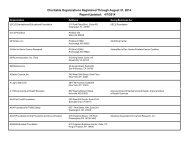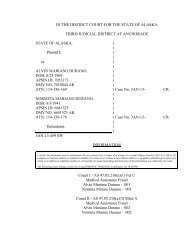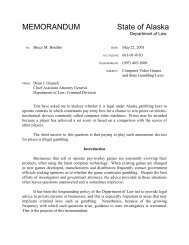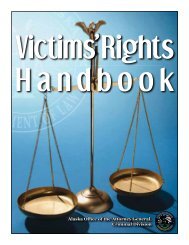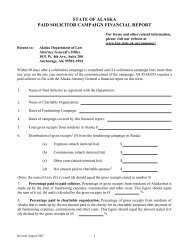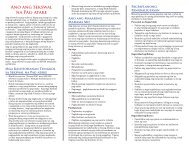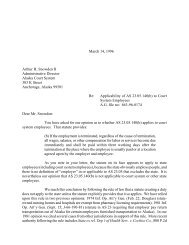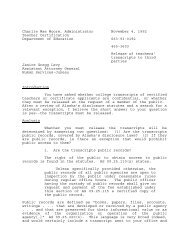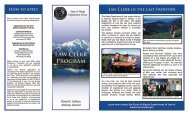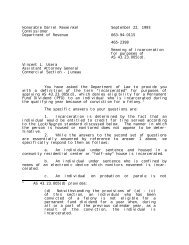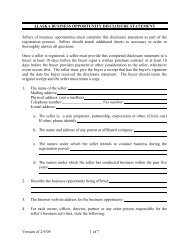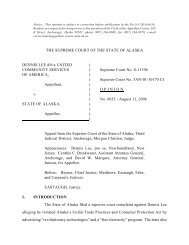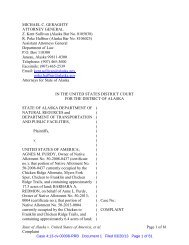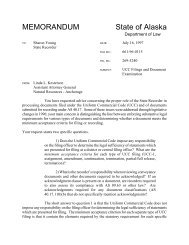Initial Report and Recommendations - Alaska Department of Law
Initial Report and Recommendations - Alaska Department of Law
Initial Report and Recommendations - Alaska Department of Law
- No tags were found...
You also want an ePaper? Increase the reach of your titles
YUMPU automatically turns print PDFs into web optimized ePapers that Google loves.
Great contrast exists today between the high income, moderate st<strong>and</strong>ard <strong>of</strong>living, <strong>and</strong> existence <strong>of</strong> reasonable opportunity <strong>of</strong> most <strong>Alaska</strong>ns <strong>and</strong> theappallingly low income <strong>and</strong> st<strong>and</strong>ard <strong>of</strong> living <strong>and</strong> the virtual absence <strong>of</strong>opportunity for most Eskimos, Indians, <strong>and</strong> Aleuts in <strong>Alaska</strong>. About fourfifths<strong>of</strong> the more than one-quarter million people <strong>of</strong> <strong>Alaska</strong> are not <strong>Alaska</strong>Natives. Most <strong>of</strong> them, living in or near urban places, lead lives verymuch like those <strong>of</strong> other Americans. . . . The other one-fifth . . . live inwidely scattered settlements, are unemployed or only seasonally employed. . . live in poverty . . . in small dilapidated or subst<strong>and</strong>ard houses underunsanitary conditions . . . are victims <strong>of</strong> disease, <strong>and</strong> their life span ismuch shorter than that <strong>of</strong> other <strong>Alaska</strong>ns. . . . They are not onlyundereducated for the modern world, but they are living where adequateeducation or training cannot be obtained, where there are few jobs, wherelittle or no economic growth is taking place, <strong>and</strong> where little growth isforecast. 22Fortunately, conditions have improved somewhat in rural <strong>Alaska</strong> over the last 37years, but there is still a great disparity between rural <strong>and</strong> urban <strong>Alaska</strong> in all thingseconomic. In 1989, over 20 years after the Federal Field Commission report, the <strong>Alaska</strong>Federation <strong>of</strong> Natives published its report on the status <strong>of</strong> <strong>Alaska</strong> Natives, A Call forAction, which reiterated the earlier report (<strong>and</strong>, for that matter, dozens <strong>of</strong> other reportsthat had been published in the interim), noting that “despite investment in infrastructure<strong>and</strong> education, in most Native communities the increase in self-sustaining economicgrowth has been minimal. When Native population growth is factored into the equation,the future is even more disconcerting.” 23 “This was followed by a report presented in1991 by the <strong>Alaska</strong> <strong>Department</strong> <strong>of</strong> Commerce <strong>and</strong> Economic Development, entitled<strong>Alaska</strong>'s Economic Challenge: The Level <strong>of</strong> Distress, which reported:Unfortunately, the fact remains that conditions in the rural areas are notgetting better. The economic prosperity <strong>of</strong> the recent pipeline constructionera has had little lasting effect on many rural areas. They continue asbefore with high unemployment <strong>and</strong> low median incomes. State <strong>and</strong>federal disputes over regulation <strong>of</strong> subsistence, boycotts on the furindustry, international socioeconomics, <strong>and</strong> dozens <strong>of</strong> road [b]locks facerural <strong>Alaska</strong>. The population continues to struggle with limited resourcestrying to find a degree <strong>of</strong> stability.” 24Also in 1991, the <strong>Alaska</strong> <strong>Department</strong> <strong>of</strong> Community <strong>and</strong> Regional Affairspublished a report, Towards a Comprehensive <strong>Alaska</strong> Rural Development Strategy, whichoutlined <strong>and</strong> discussed barriers restricting the economy <strong>of</strong> rural <strong>Alaska</strong>. These included:1. Rural financing barriers (capital constraints)222324Arnold, R.D., et al. <strong>Alaska</strong> Natives <strong>and</strong> the L<strong>and</strong>. Federal Field Committee for Development Planningin <strong>Alaska</strong>. Washington, D.C.: United States Government Printing Office, 1968: p. 3.The AFN <strong>Report</strong> on the Status <strong>of</strong> <strong>Alaska</strong> Natives: A Call for Action. Anchorage, <strong>Alaska</strong>: <strong>Alaska</strong>Federation <strong>of</strong> Natives, 1989: p. 29.<strong>Alaska</strong> Natives Commission Final <strong>Report</strong>, Volume II, op cit., p. 84.<strong>Alaska</strong> Rural Justice <strong>and</strong> <strong>Law</strong> Enforcement Commission - Page 19



